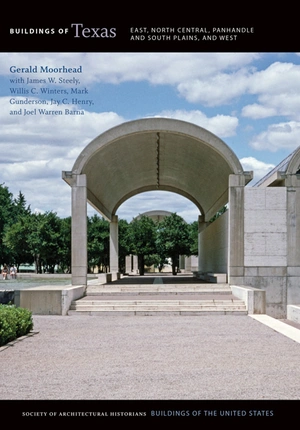
The former Gulf Oil Building, located in oilman Clayton Williams’s Claydesta Office Park north of downtown, has a triangular building plan. A sloping wall faces northeast, looking like the face of a truncated glass pyramid. The other two elevations, faced with concrete, are vertical in alignment rather than sloped. The building’s main entrance, facing south, is stepped to hollow out an atrium behind a masonry wall with windows set deep into slanting frames. Inside, balconies supported on smooth concrete columns project outward as the building rises, so that the floor plates remain the same size from top to bottom. Although a single building, the scheme reflects designer Paul Kennon’s dedication to the megastructure concepts of Kenzo Tange: the geometry could be endlessly extended. The stark geometry of the tapered triangle was generated to address energy conservation considerations. The dramatic sloping northeast wall absorbs daylight and the stepped south and west walls are more guarded in admitting daylight. The Gulf Building is visually startling because it is such a clear diagram of its solar performance.








